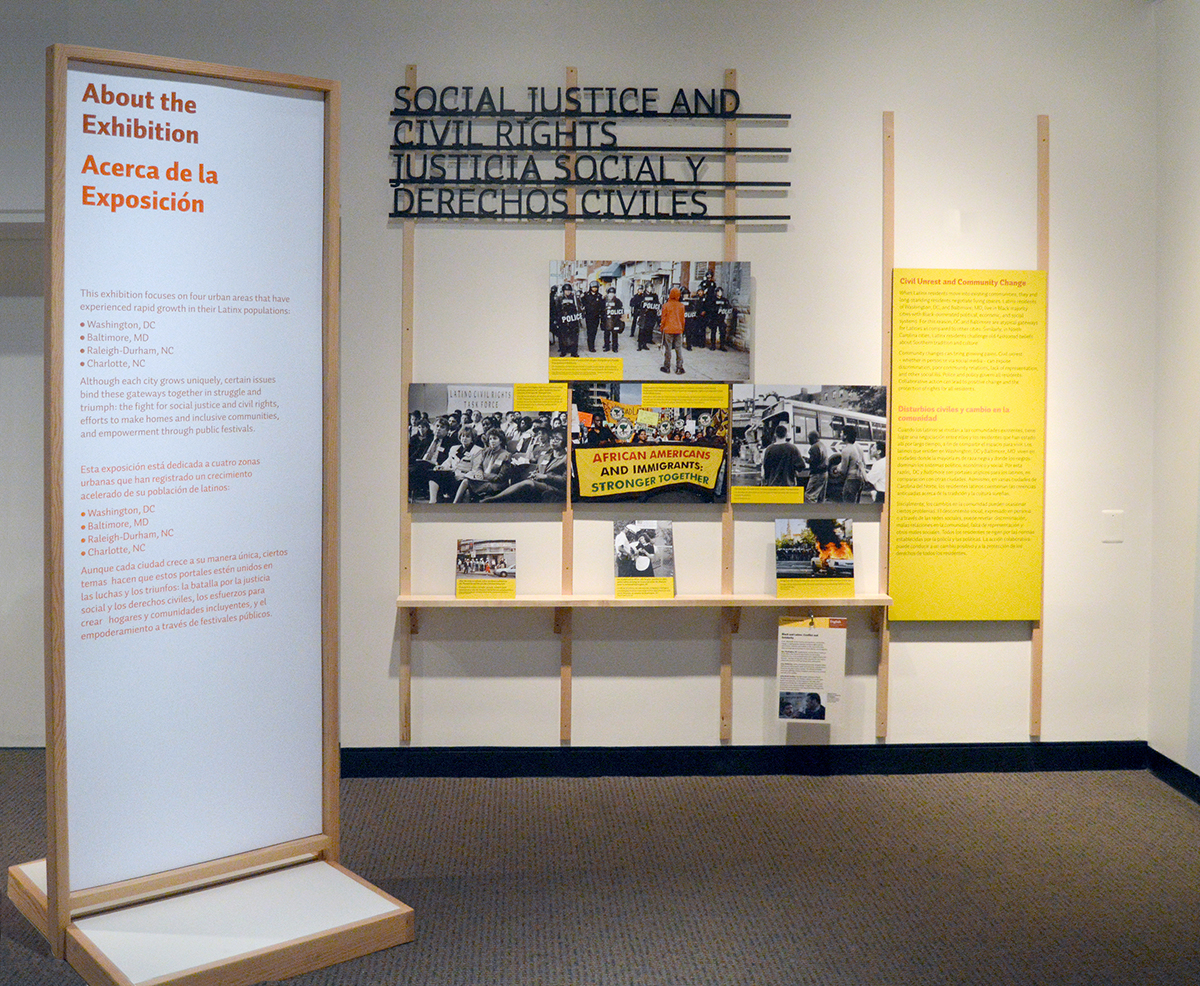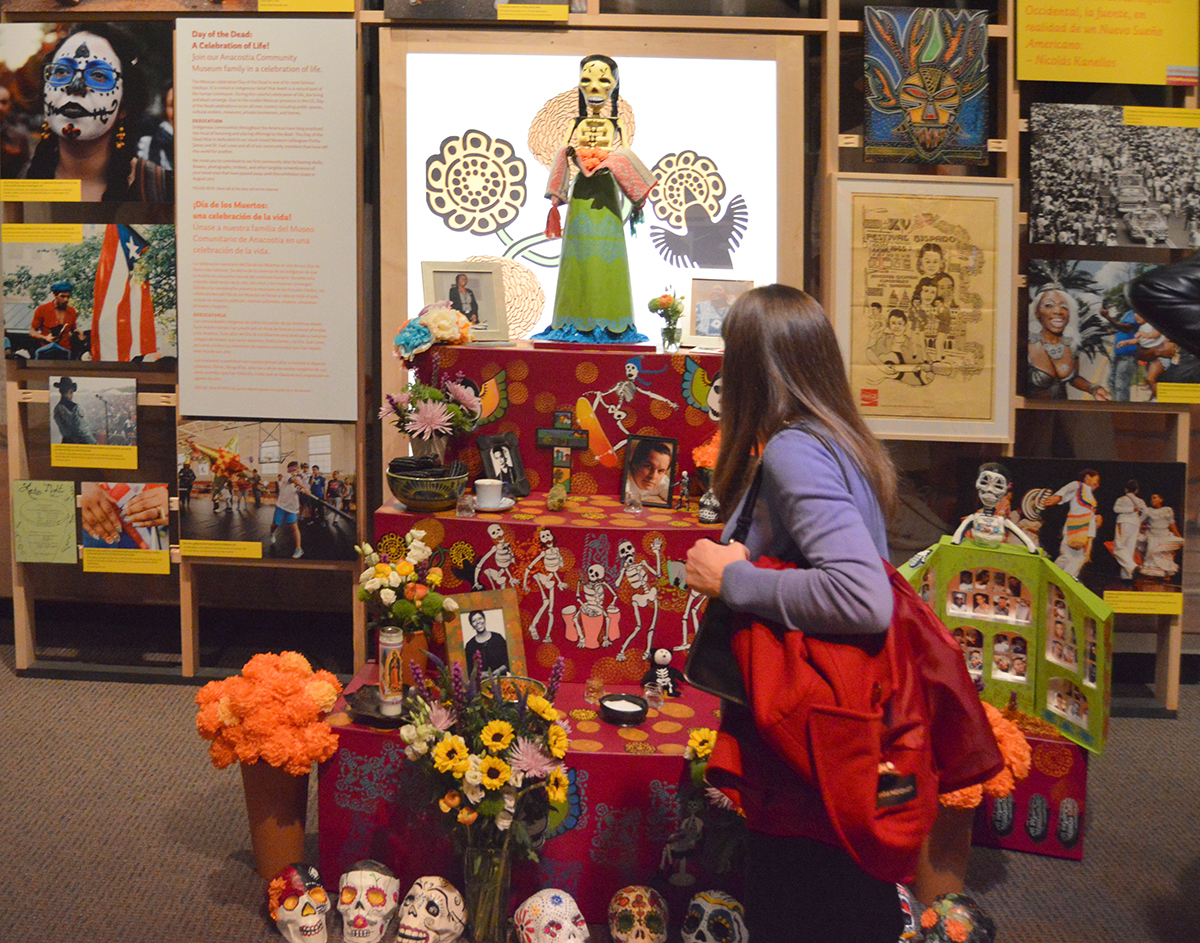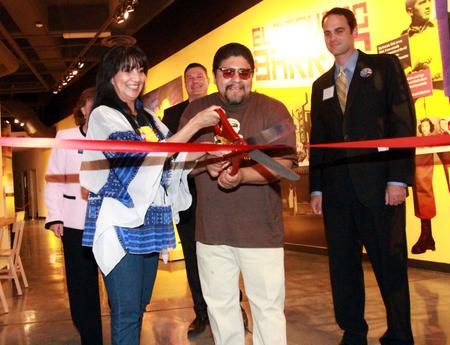Bilingual Exhibits
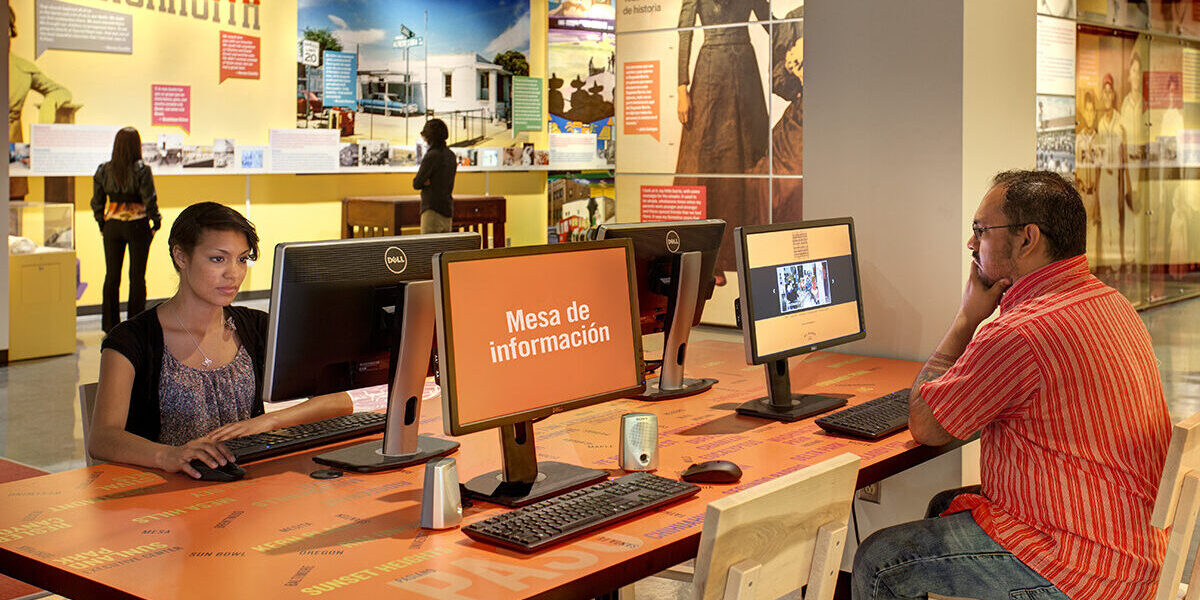
According to the Pew Research Center, "The U.S. has more immigrants than any other country in the world. Today, more than 40 million people living in the U.S. were born in another country" By the 2050, it is estimated that there will no longer be a white majority in the United States and everyone will be part of some ethnic minority. Since the Immigration and Naturalization Act of 1965 new arrivals came from all over the world unlike before in the quota system that had a preference for European immigration. This produced a migration of much broader cultural spectrum and greater linguistic diversity. "As of 2015 79% of household speak english and the remaining 21 percent (64.7 million) reported speaking a language other than English at home. Spanish was by far the most common language (62%), followed by Chinese (5%)."*
The implications for museums are enormous. The demographic changes challenges museum's viability and ability to accomplish its mission. If the institutions are to continue to serve their community, then they must adapt to the changes in their community. The need for greater cultural fluency in the community they serve is essential and along with it comes greater linguistic versatility. Museums have always had multilingual maps and guides expecting the tourist visitor, but now the relationship to the multicultural visitor as part of the community requires a greater commitment to being bilingual or multilingual.
21% (64.7 million) of households reported speaking a language other than English at home.
Access to Content
The most immediate benefit of bilingual interpretation is that visitors commonly value the ability to access content in their preferred language. This is especially true for adults with little exposure to english and a strong dominance of their native language. It is important in such cases to make sure you promote the exhibit and the museum as bilingual otherwise it is assumed that all information is in English. Outdoor publicity and exhibit panels such as the one shown above must include both target languages and are represented with equal hierarchy as to inform the potential visitor that ample consideration is given to their language of preference. It presents the museum in a more welcoming light.
Code-Switching
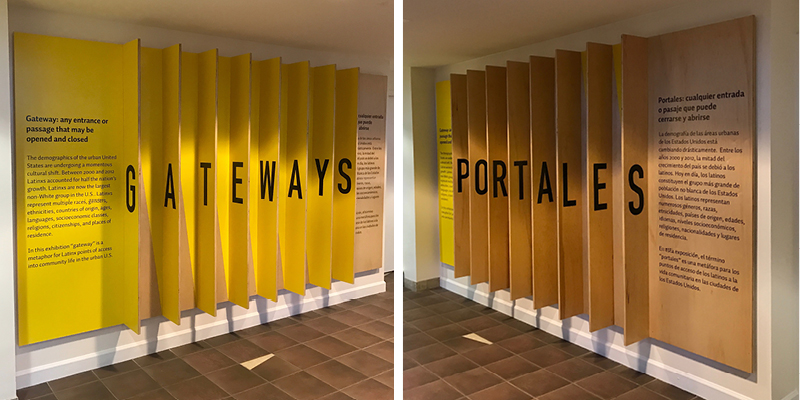 The practice of alternating between two or more languages or varieties of languages in conversation is known as Code-Switching. It is common for groups of bilingual people to code-switch during a visit to an exhibition. Groups changed between the languages often, even sometimes within the same sentence. According to Bilingual Exhibits Research Initiative (BERI) Report of the NSA, "In post-‐visit interviews, bilingual groups said this was a common occurrence for them, especially when they came across a word or phrase in one language that was more easily said or understood in the other language. The groups said switching was relatively effortless and natural for them." This is to say that the presence of both languages is part of the visitors idiom. Bilingual families and groups communicate bilingually.
The practice of alternating between two or more languages or varieties of languages in conversation is known as Code-Switching. It is common for groups of bilingual people to code-switch during a visit to an exhibition. Groups changed between the languages often, even sometimes within the same sentence. According to Bilingual Exhibits Research Initiative (BERI) Report of the NSA, "In post-‐visit interviews, bilingual groups said this was a common occurrence for them, especially when they came across a word or phrase in one language that was more easily said or understood in the other language. The groups said switching was relatively effortless and natural for them." This is to say that the presence of both languages is part of the visitors idiom. Bilingual families and groups communicate bilingually.
Cultural Connection
We all interpret our world through our connection with culture. Immigrants have the need to preserve continuity with their culture of origin to make sense of their lives even in the new cultural environment they now partake. Bilingual museum experience can provide that footing to understand the transitions they are going through. Parents also wish for their children to have a cultural connection with their family’s culture so that they will understand their heritage and ancestry. If anything it helps the children understand them as parents and who they are. Parents also strive at making their children bilingual by learning their language or origin. They know it's inevitable that they will learn English because of school and friends. Often times for children to communicate with grand parents or visiting relatives they are obliged to speak the language of origin. Bilingual exhibits are attractive opportunity for experiences with this type of learning much cherished by immigrant parents.
Facilitator
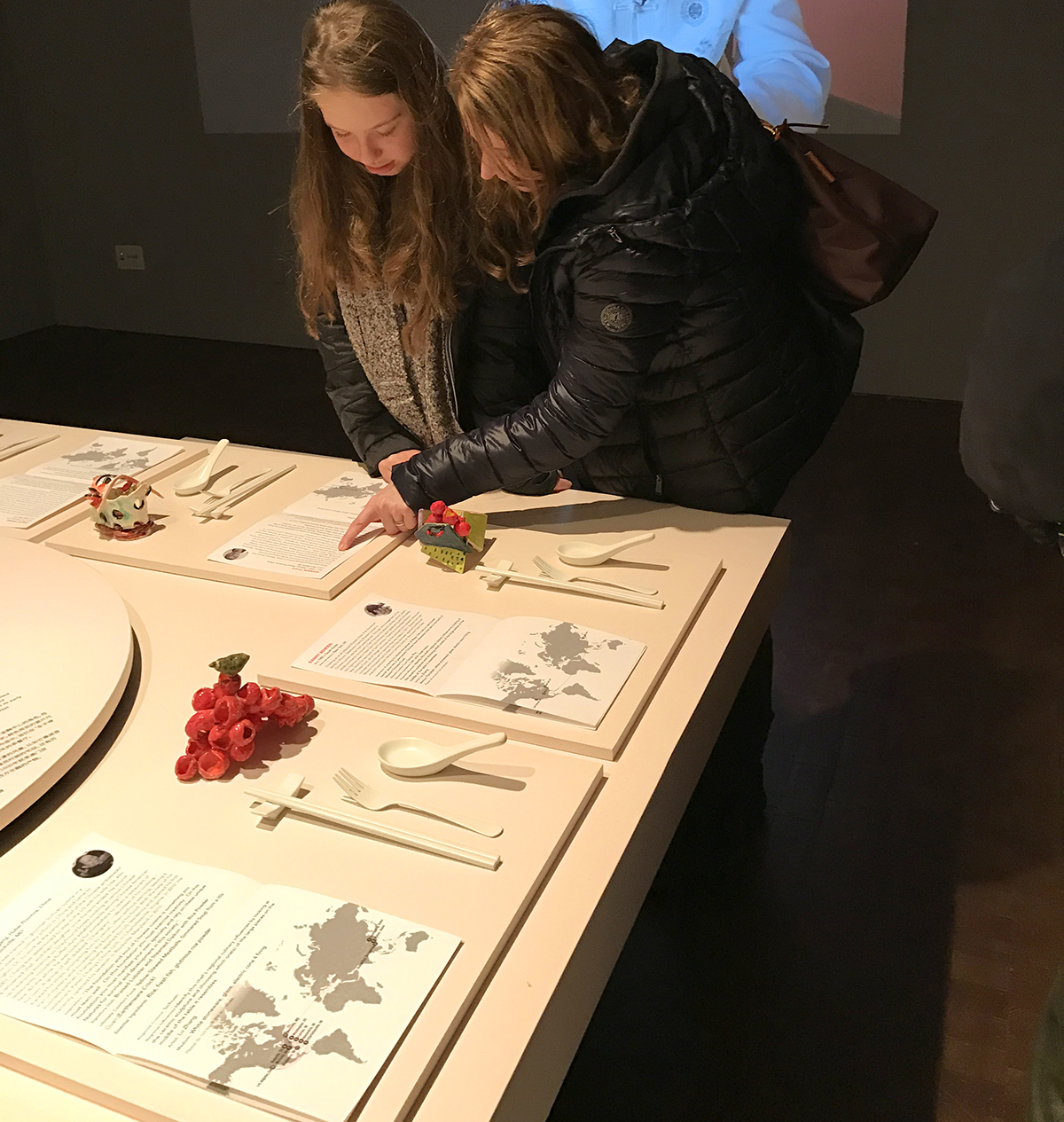 The main reason to have bilingual text is to provide adults access to content that allows them to fulfill their role as facilitators of the experience for the children, since they can read instructions, share information, especially if the children ask what about the exhibited items. This is essential when parents are better at reading their native language and the children are too small to read. Also the pattern of general reading behavior is for adults to read more often than children, so not to provide the language where the adults are more proficient would risk diminishing the quality of the museum experience. Adults know best the level of their child's comprehension and consequently are better mediators of information. Providing them with the information they need can only improve the experience.
The main reason to have bilingual text is to provide adults access to content that allows them to fulfill their role as facilitators of the experience for the children, since they can read instructions, share information, especially if the children ask what about the exhibited items. This is essential when parents are better at reading their native language and the children are too small to read. Also the pattern of general reading behavior is for adults to read more often than children, so not to provide the language where the adults are more proficient would risk diminishing the quality of the museum experience. Adults know best the level of their child's comprehension and consequently are better mediators of information. Providing them with the information they need can only improve the experience.
Learning to be Bilingual
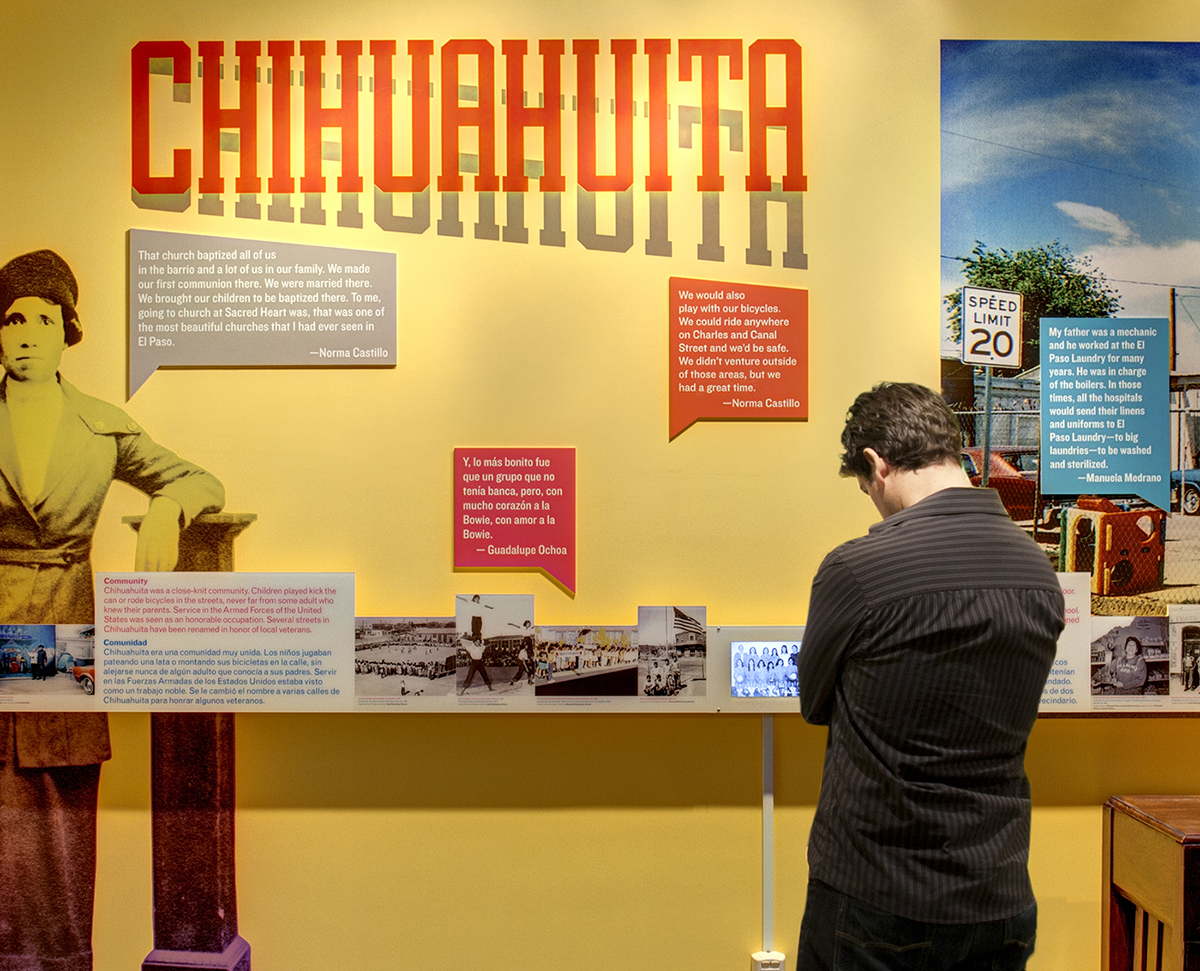 It is common for people learning a language to test and challenge themselves on a daily basis and bilingual museums offer a great opportunity. According to the BERI report this happens in museums as well. "With bilingual text, quite a few Spanish dominant adults said they tried the English first, then the Spanish to see if they understood it properly; in this manner they were improving their English. Adults also said it was important for their kids to learn or maintain Spanish, and thought having Spanish text helped them do that. They especially valued the ability of their children being bilingual, which was seen as a big advantage." From perspective of the private sector in white papers such "Delivering through Diversity" by McKinsey and Company, they value bilingualism as a resource for companies and communities. Companies recognize that we are living in an increasingly globalized world, where multiculturalism is more often the norm. Consequently,cultural fluency is becoming ever more crucial for functioning organizations – allowing to create identities that are more fluid in such multicultural contexts.
It is common for people learning a language to test and challenge themselves on a daily basis and bilingual museums offer a great opportunity. According to the BERI report this happens in museums as well. "With bilingual text, quite a few Spanish dominant adults said they tried the English first, then the Spanish to see if they understood it properly; in this manner they were improving their English. Adults also said it was important for their kids to learn or maintain Spanish, and thought having Spanish text helped them do that. They especially valued the ability of their children being bilingual, which was seen as a big advantage." From perspective of the private sector in white papers such "Delivering through Diversity" by McKinsey and Company, they value bilingualism as a resource for companies and communities. Companies recognize that we are living in an increasingly globalized world, where multiculturalism is more often the norm. Consequently,cultural fluency is becoming ever more crucial for functioning organizations – allowing to create identities that are more fluid in such multicultural contexts.
Emotional Reaction
The mere presence of the bilingual interpretation carries a symbolic meaning that brings out strong emotional reaction. It re-aligns visitors relationship with the museum because they feel welcomed and valued by the institution. For this to happen the bilingual interpretation must be on par with the English text. Paper handouts of the type given to tourist the makes visitors feels addressed but when one’s language is in same hierarchy then one is included. Case example when El Paso Museum of History produced its first bilingual exhibit along with oral history stories sourced from the community the Latinx neighborhood had a change of hearts about the museum. Community leaders Manny Rodriguez, left, president of the Chihuahuita Neighborhood Association and Osvaldo Velez, center, president of the South Side Neighborhood Association volunteered and participated in the cutting of the ribbon on the Neighborhoods and Shared Memories Nuestros vecindarios y sus memorias.exhibit.
Category: Museum Portfolio, Portfolio
Copyright © 2024 · All Rights Reserved · Museum Environments
· Log in

